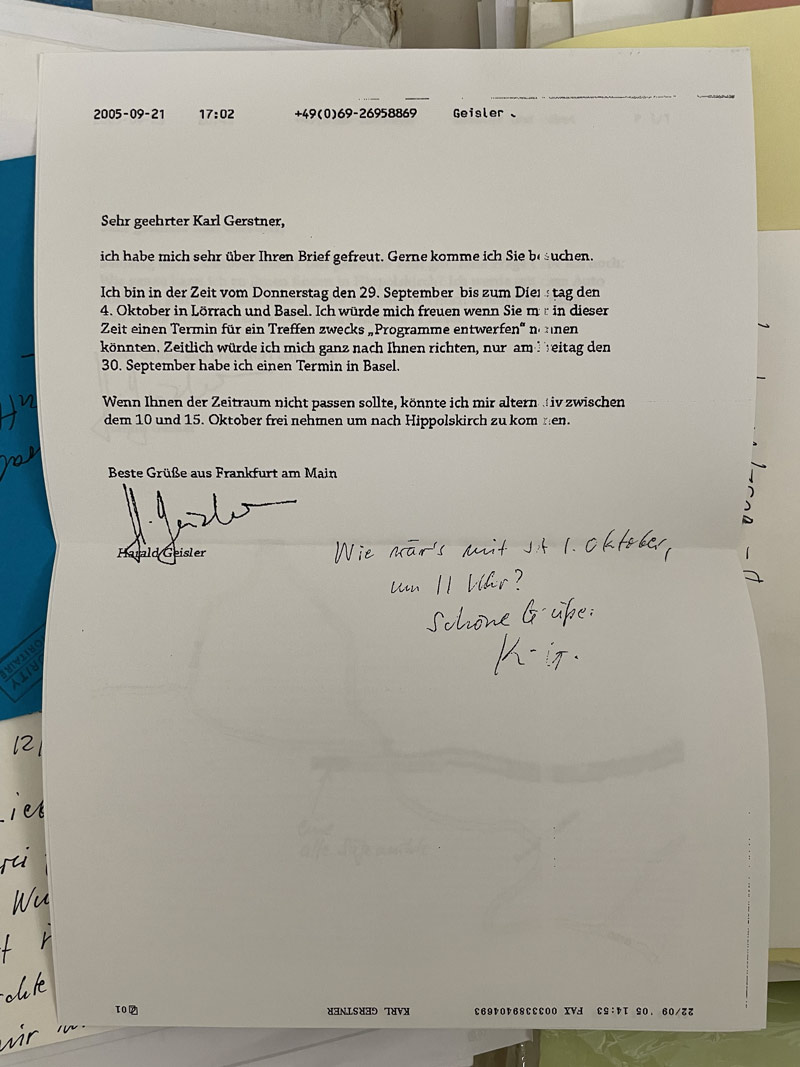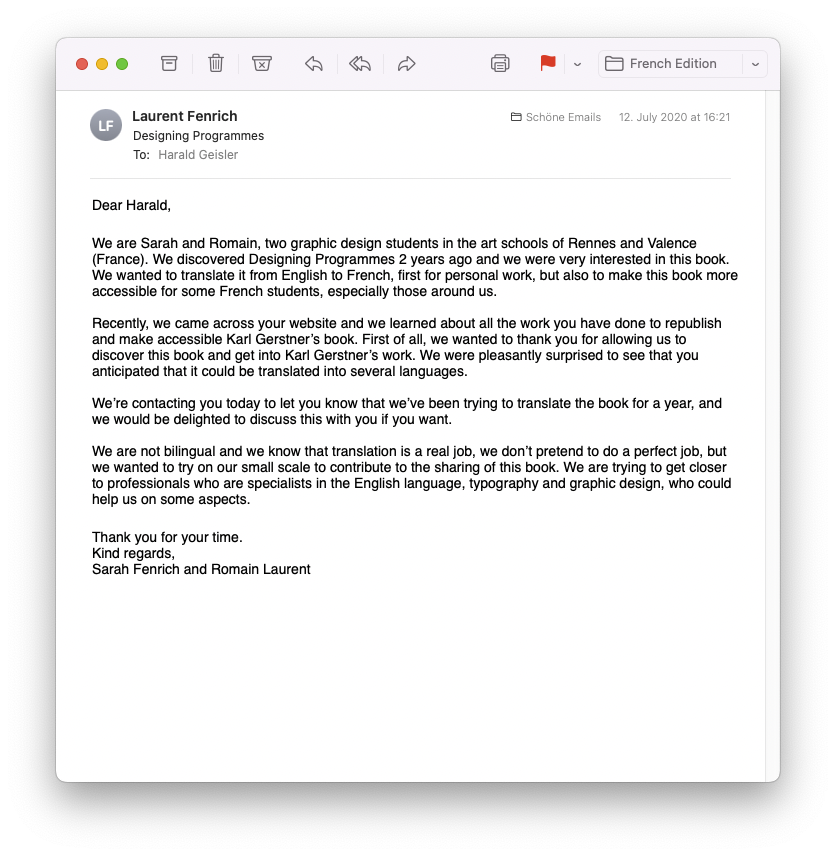Die deutschsprachige Version finden Sie →hier. Version française →ici.
Some important books have only a brief life. They may light up an unexplored area or catch a rising tide of interest before they disappear onto dusty shelves. A few others last, are referred to and recommended by one generation to another.
Designing Programmes is one such survivor.
Richard Hollis
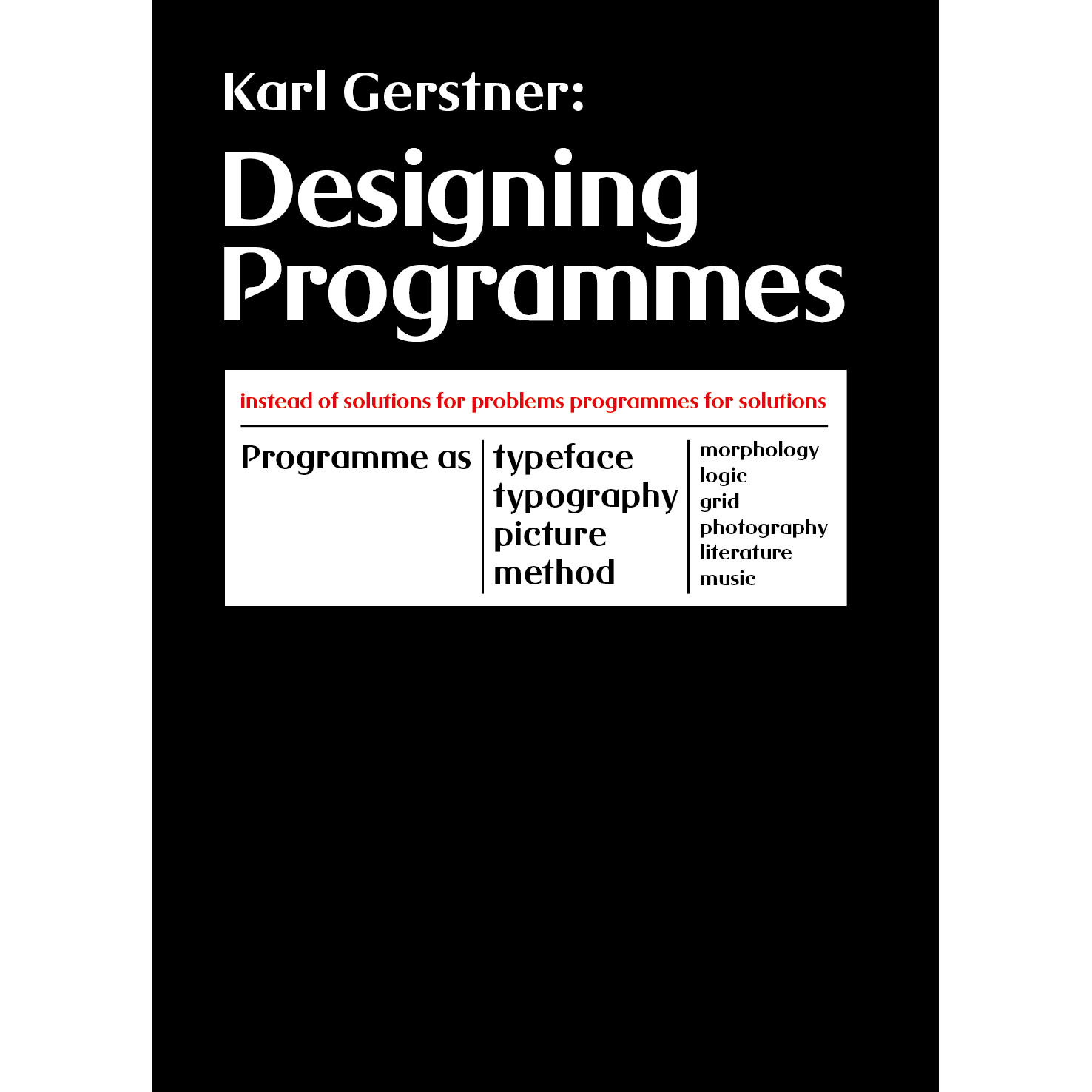
Instead of solutions for problems,
programmes for solutions
– the subtitle can also be understood in these terms: for no problem (so to speak) is there an absolute solution. Reason: the possibilities cannot be delimited absolutely. There is always a group of solutions, one of which is the best under certain conditions.
To describe the problem is part of the solution. This implies: not to make creative decisions as prompted by feeling but by intellectual criteria. The more exact and complete these criteria are, the more creative the work becomes. The creative process is to be reduced to an act of selection. Designing means: to pick out determining elements and combine them. Seen in these terms, designing calls for method. The most suitable I know is the one Fritz Zwicky has developed, although actually his is intended for scientists rather than designers. (Die morphologische Forschung, 1953, Kommissionsverlag, Winterthur). I have produced the diagram below in accordance with his instructions and, following his terminology, I have called it the morphological box of the typogram. It contains the criteria – the parameters on the left, the relative components on the right – following which marks and signs are to be designed from letters.
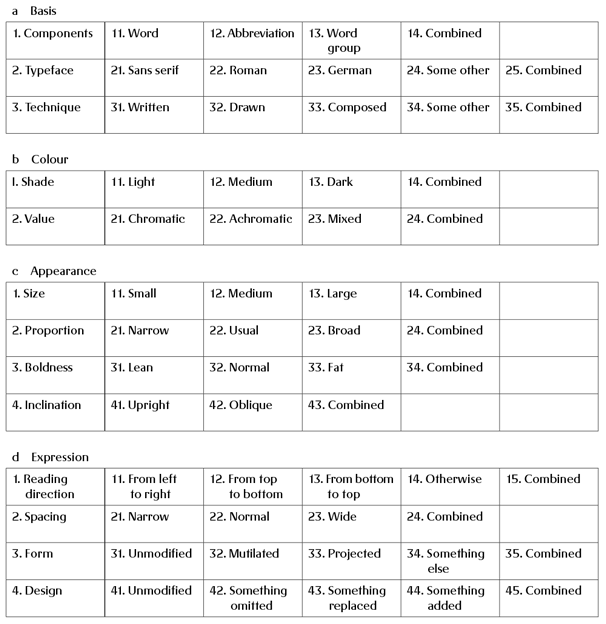
The criteria are rough. As the work proceeds, of course, they are to be refined as desired. The components are to be made into parameters and new components are to be specified, etc. Moreover, they are not only rough, they are also not self-contained. The component “something else” is the parcel in which the left-overs are packed if the parameter does not break down neatly. The designations are imprecise in some cases. There are many imperfections. But it is precisely in drawing up the scheme, in striving for perfection, that the work really lies. The work is not diminished, it is merely transferred to another level.
Karl Gerstner, from the introduction (p.12)
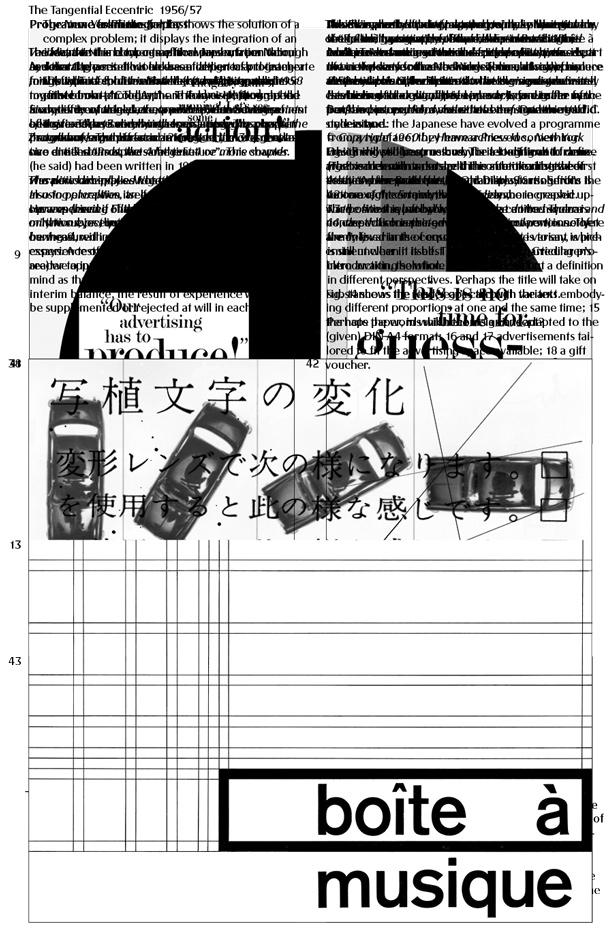
How this project came about.
Around 2005 I discovered Designing Programs, 41 years after it was first published in 1964. It was a review written by Richard Hollis and included very small pictures. It was particularly this image that got my attention:
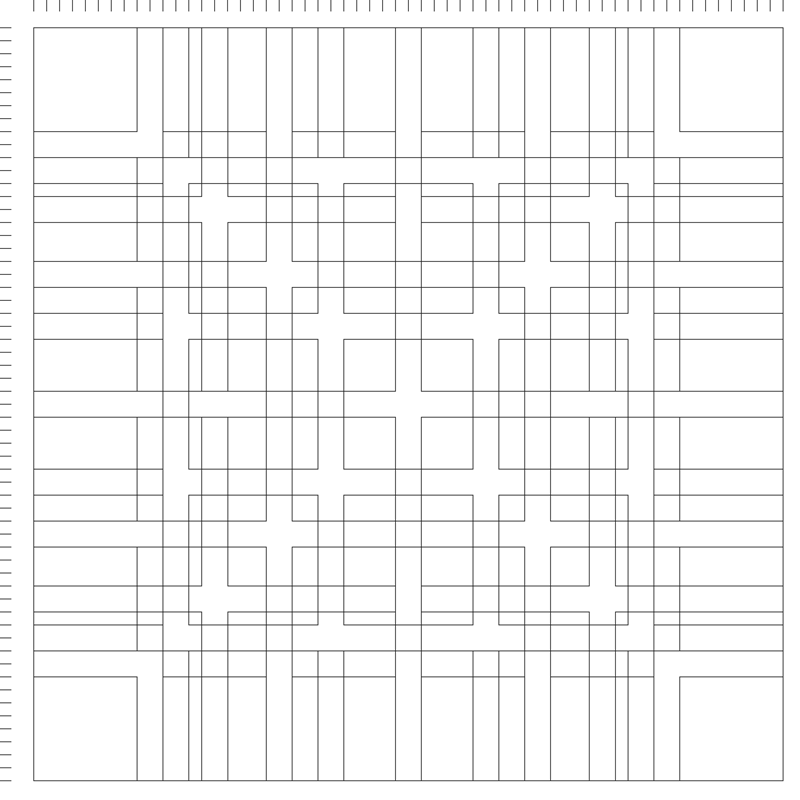
At the time, I was in my first semester of typography and started to read everything I could get my hands on.
Having already read Gerstners Compendium for Literates and 5×10 years of graphic design, I was eager to read Designing Programmes, too, and to get behind the secret of the image. But I could not find a copy. At the time, I switched to a different university (hfg OF), and luckily, the library had a copy from the 1960s. I would extend the book for one year, but I did not like the idea of giving it back. So during a conversation with my typography lecturer Prof. Friedl, the idea of reprinting an edition came about. He simply gave me Gerstner’s fax number to reach out to him.
I described the situation to Gerstner and pitched him the idea of creating a new updated version of Designing Programmes in the way he would do it today. He agreed to meet and discuss the matter. Three years of meetings followed in Gerstner’s remote house near Basel, and due to the lack of Internet, a high volume of fax and letter exchange started. Jonas Pabst joined the project early on, and we created this edition of Designing Programs. In 2007 finally, 4500 copies of Designing Programs were printed in English and German at Lars Müller Publishers. The English edition is so rare that the publisher decided to offer it for €200 ($223), and used prices start at $149. (prices from July 1st, 2022)
The original motivation was that no copy was available and that this situation should not happen again. I imagined another student 41 years from now would look for the book and be unable to read it.
Ultimately things tend to get lost over time or just hard to get by. I thought that a digital copy that could always be available for free would be the best way to prevent the situation. So when we made the contract with the publisher, we agreed that we would make a digital copy of the book free after a certain time.
This was thought of in a time when the internet enthusiastically promised everlasting solutions for everything. A decade later, the opposite is true, having seen websites come and go, formats like Flash become unreadable, or complete networks with content disappear. The university library seems more promising than simply putting something on the internet. On the other side, just like in my case, not everybody has access to a library.

I was delighted when in July 2020, Sarah Fenrich and Romain Laurent reached out to discuss a translation of the book into French. These two people started Programmes de conception. They are the ones you have to thank for this work in front of you. I have to thank them because their work fulfilled what I set out to do. Books do not live between two printed covers on a bookshelf – books live through a reader’s eye. Sarah and Romain’s work opened Programmes de conception to the eyes of a whole new readership. Thank you.
Making Designing Programmes available is what this project is about.
To make a book thrive, it needs a community of exchanging readers and advocacy. During the making in 2006, I realized that the typographer is always addressed as a man. Further, not all typography and design students can read English or German texts. Could you imagine translating some of the text to Spanish, Korean, or Danish? The examples given in the essays and introduction, with few exceptions express a euro-centric view of design. Gerstner later explored geometric art made in north Africa. Could there be a middle eastern / North African version of Designing Programmes? These are just some of the tasks this project sets out to do, and I like to invite you to participate!
This site offers you to download a free PDF copy of Designing Programmes. By downloading, you are joining a mailing list that will keep you informed about the project’s progress. This project can only stay alive through persistent engagement and financial support.
Current tasks:
- Maintaining the site
- Updating the files
- Publishing a quarterly Newsletter (English)
- Translation to other languages
- Offering an inviting space for participation and exchange about the project
- Documenting the changes in Designing Programmes
Possible future tasks:
- Newsletter in French
- Newsletter in German
- Starting a discourse about possible extensions or continuations of Designing Programmes:
- Addressing the eurocentric – view of Designing Programmes
- Extending the view to other cultural areas, i.e. Designing Programmes in North Africa, the Middle East, or…
- Creating a workshop and educational material around Designing Programmes for working with students
- Adapting / Updating the language
- Advocacy
- Moving the site from haraldgeisler.com to designingprogrammes.com
Download Your Free PDF Now.
Included in Your Download:
- Designing Programmes – Corrected 2022 English Edition (PDF)
- Programme entwerfen – Corrected 2022 German Edition (PDF)
- Programmes de conception – French Edition 2022 (PDF)
- Quarterly Newsletter – Updates on project progress
Downloading the PDF is free. If you’d like to support the project, you can make a one-time donation or opt for a small recurring quarterly contribution.
The PDFs are available for personal, educational, and non-commercial use only.
Sharing Guidelines:
If you wish to share the PDF, please direct others to this website. Do not distribute the files through other websites, emails, or messages. Your cooperation is appreciated.
A Quarterly Donation
Your support greatly contributes to the success of this project. The more support we receive, the more time we can dedicate to enhancing the PDF.
Additionally: Donors will be acknowledged in our quarterly Designing Programmes newsletter.
☕️
The minimum donation is €3 (equivalent to the cost of a coffee ☕️). Lower contributions may be diminished by PayPal or credit card fees.
Get involved
Would you like to translate Designing Programmes to another language 🇪🇸🇰🇷🇳🇱🇮🇹🇧🇷🇯🇵🇨🇳🇻🇳🇸🇪🇺🇦, or did you find a typo or error in the PDF or files? Reach out through https://haraldgeisler.com/about/#contact
